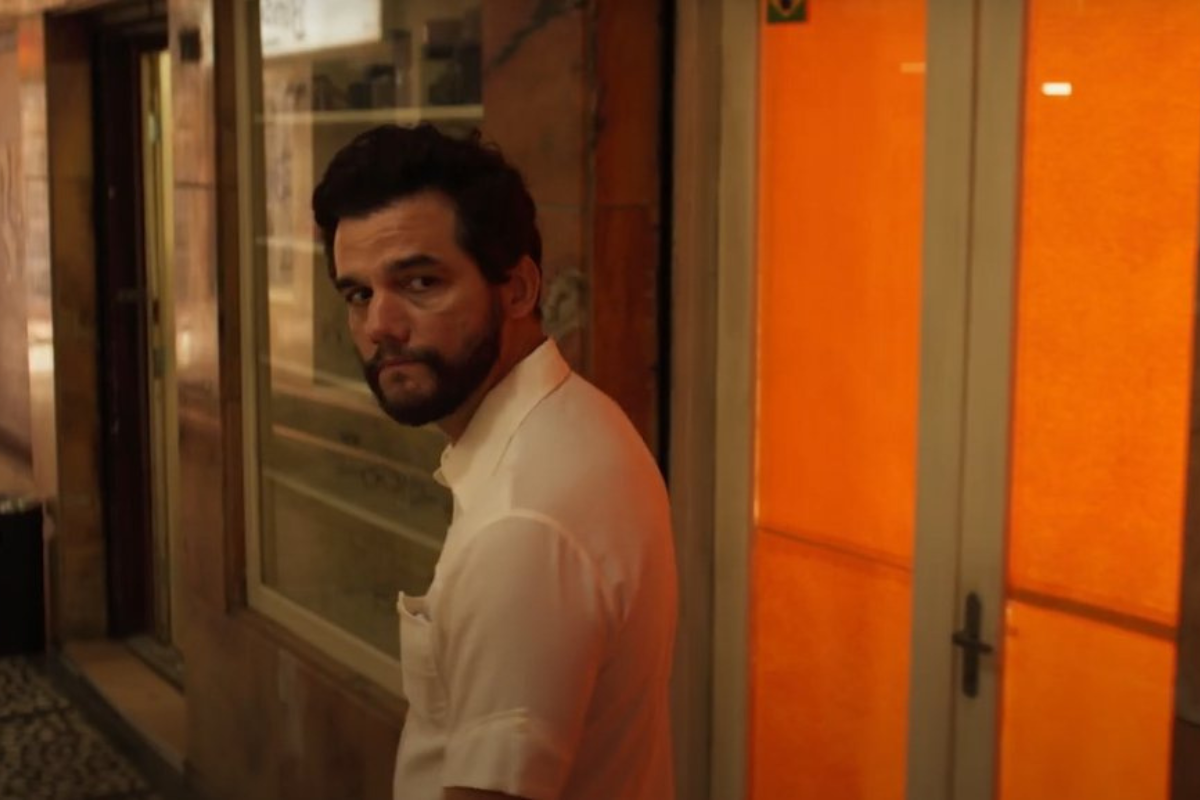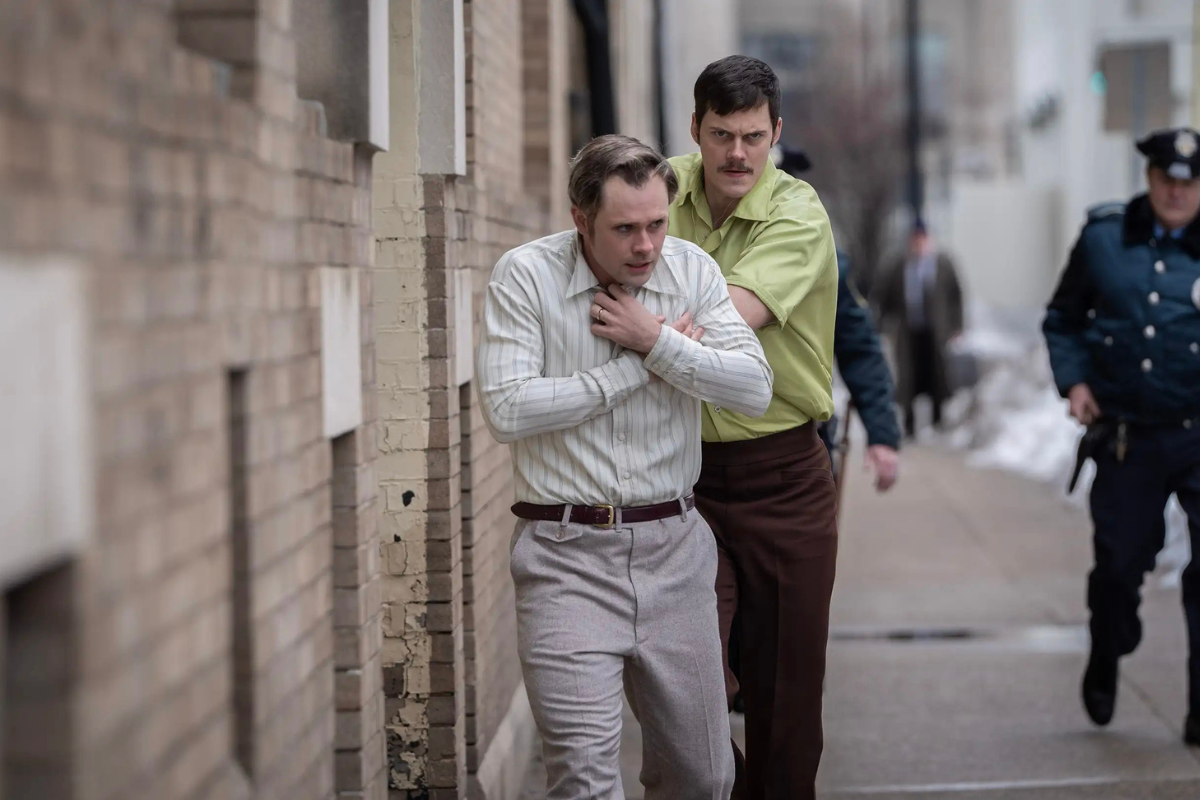UNDERSTANDING SCREENWRITING: Ladies of All Kinds
Tom Stempel reviews Downton Abbey, Hustlers, and the lineup of this Fall 2019 Television Season.
Click to tweet this article to your friends and followers!
Welcome Back, Lady Mary, Lady Edith, and the Dowager Countess.
Downton Abbey (2019. Screenplay by Julian Fellowes, Characters by Julian Fellowes. 122 minutes)
A letter is signed in flowery handwriting. It goes to the post office. It goes on the Night Mail train to northern England (we know it is the Night Mail train because this montage bears more than a passing resemblance to the great 1936 documentary of the same name). The letter goes into the post office van, then the post office. A postal employee rides on a bicycle through the countryside . He goes up a familiar path to…Downton Abbey. He gives the letter to Andy, one of the footmen at the Abbey, who looks at the letter and says, “Blimey.” Andy takes the letter to Barrow, the head of household staff, who takes it to Robert, the Earl of Grantham. Robert opens the letter and tells his eldest daughter, Lady Mary, the contents. Lady Mary’s reply is, “What?”
Now you may think “What?” is not a great line of dialogue. In this case, it is, and great screenwriting as well. Fellowes knows the line is going to be read by Michelle Dockery, who plays Lady Mary, who puts such a good edge on her reading that they could not resist using it in all the trailers. By now, ten years on, Fellowes knows how to write for these characters and more importantly, these actors. There are many, many lines in the film that simply would not be as effective if read by other actors.
“What?” is also great screenwriting because it is a brilliant finish to a dazzling piece of what Charles Bennett’s Fat Little English Friend would have called “Pure Cinema.” That’s the correct term for the first ten minutes or so of Downton Abbey, but not in the way Hitchcock meant it. He meant it as flashy directorial tricks without any dialogue or story to get in the way of his showing off. But in this case, there is a strong narrative line—following the letter—from the Palace to the Abbey. It is a story element that pulls us through all the different locations and actions to get us from one place to another to get the film going.
The film slows down a bit for the next half an hour or so as we see everybody in the Abbey react to the news that the King and Queen are coming. Fellowes has to bring in our old favorites from the television show, about twenty altogether, and give them their moments, although not all in this half hour. He also has to bring in the royal staff, who intend to take over the Abbey for the visit. Needless to say, our guys don’t take kindly to that and later in the film Fellowes finds ways to deal with both the royal and the house staffs.
If you have seen the trailers for Downton Abbey, all but two or three shots are from the first 45 or 50 minutes of the film, which is why that part of the film may be a bit sluggish for you. I was surprised when the royals arrive at about 45 minutes into the film. I would have expected them to arrive much later, but Fellowes has a pile of surprises, twists, and turns after they get there. No, I am not going to tell you what they are, assuming you may not have been what one Irish theatre manager told my friend Elaine were “all the little old ladies” in the auditorium showing Downton on opening night. When I saw it the Monday after it opened, it was a younger crowd, but still predominantly female.
In the last hour-plus, the scenes get longer, but the film moves quicker, because there is a lot of story to cover, as well as a lot of characters to service. Since we spent more time with the “downstairs” staff in the first half, we are with the “upstairs” crowd in the second half, and they tend to live at a slower pace. There are also more dramatic scenes. Near the end, Violet, the Dowager Countess (Maggie Smith, in case you forgot) takes Lady Mary, whom Violet recognizes is the person who runs Downton now, into a room. Violet tells her what is going to happen to the Crawleys and Downton. It is a scene both simple (two women talking) and complex (what all of what we have seen in this picture means), and the director Michael Engler follows my rules for how to make a good movie: get a great script, get great actors, and then stay the fuck out of their way.
Needless to say, Fellowes does not forget to give Dame Maggie great lines and exchanges with Isabel. My favorite exchange between the two (and there are many to choose from) has Isabel telling Violet that Tom Branson, the Irish ex-chauffer who married Lady Sybil and who is now a widower, has taken an interest in Lucy Smith, Maude Bagshaw’s maid. Maude is a distant relative of the Crawley’s and apparently in a position to sell Downton out from under them. All this Violet and Isabel know. When Isabel tells Violet that Tom has asked and received permission to write to Lucy, Violet’s reply is a classic Julian Fellowes-Maggie Smith line. Think about what you would write for Violet. I’ll give you Fellowes’ line at the end of the column.
Different Kinds of Ladies.
Hustlers (2019. Screenplay by Lorene Scafaria, based on the New York magazine article “The Hustlers at Scores” by Jessica Pressler. 110 minutes)
As I was watching this movie, I was constantly thankful that this was not only written by a woman, but directed by her as well.
Based on a true story, Hustlers is about a group of pole dancers in a New York club. When the stock market crash comes in 2008, the number of customers goes down. Way down. So Ramona, the grand diva of the dancers, and her protégé Destiny, take to focusing on the richest customers, getting them drunk, drugging them, and using their credits cards to build up a pile of money and bling. The women were eventually caught, although they avoided jail.
Scafaria starts the film with Destiny, the new girl at the club attracting the attention of Ramona. Ramona teaches her to work the pole. The focus of these scenes, in both the writing and the direction is on the growing relationship of Ramona and Destiny. We get only what we need to see to learn about them and learn about pole dancing. Scafaria is paying attention to the story and the characters. You can imagine what male writer and a male director would do with that material e.g., slobber, slobber, pant, pant. Yes, Scafaria does give us a lot of female flesh, but never more than she needs to tell the story.
When the customers begin not showing up, the story slows down. Scafaria begins to spend way more time with just the girls hanging out than she needs to. There is a long, way too long, Christmas party scene with all the women that could have cut altogether, since it does not tell us anything we do not already know about the women and their situations. It stops the show but not in a good way.
The story begins to pick up when Ramona comes up with her idea on how to hustle the rich customers who are left. We don’t get to know any of the men, other than they all seem to be idiots, which is undoubtedly how they appeared to the women. Given how women are often portrayed in films written and directed by men with very little characterization, it is perhaps a just reward that guys get the same kind of treatment here, but it lessens the film.
The story is told in flashbacks as Destiny is telling her story to Elizabeth, a fictional version of Jessica Pressler, the author of the original article. This provides a perspective on the story and how Destiny feels about it, which gives the film a little more substance than it otherwise might have had.
Oh, yeah, JLo. I always like writers who write interesting characters, and Scafaria has written a great character for Jennifer Lopez to play. Very few other writers have nailed Lopez’s on-screen quality as good as Scafaria has. More please.
Some Old, Some New: the Fall 2019 Television Season.
The Fall television season started, bringing us some old shows back and some new ones in.
NCIS last spring pulled a whooper of a twist, letting us know that Ziva David, the Mossad agent whom we had been told was killed back in 2013, is alive. She showed up in Gibbs’s basement and the two were caught in a gunfight. They escaped and at the beginning of this season Ziva explained what happened and who she is trying to track down. She eventually does, but the writers spend as much time with the crew trying to deal with the fact that Ziva is still alive. The newer members of the team are in awe of Ziva because she is a legend to them. There is a lot of nice writing for all the characters here. Than Ziva disappears again and apparently we will not see her again until a couple of episodes late in the season. That’s a bit frustrating for us viewers, but they may be building up to a meeting of Ziva and her former lover DiNozzo. Since DiNozzo is played by Michael Weatherly, now the star of Bull, we may have to wait until he finishes shooting the Bull season.
9-1-1 started with a spectacular 3-episode arc in which our characters are involved, both on and off duty, with a tidal wave immersing Santa Monica. I hate to think how cheap the rest of the season’s episodes will be to pay for the special effects. This is an example of the writing was up to effects, not always the case.
Madam Secretary has now jumped two years ahead and Elizabeth McCord is no longer Secretary of State, but President of the United States. The most interesting twist is that the Republicans who lost the election are now claiming that Elizabeth had colluded with Iran to help win the election. Now that is a really neat twist on the Trump Russian investigation.
Of the new comedy series, my favorite, and so far an audience favorite, is The Unicorn. No, it is not an animated kids’ show. The title character is Wade Felton, a 40ish widower who is now being encouraged to getting back into the dating game. He is a bit reluctant, but two couples, especially the wives, are determined to push him into it. Wade is played by Walton Goggins in a real change of pace from his classic Boyd Crowder in Justified. Goggins and the writers are great at exploring his different skill set. Who’d thunk that Boyd could be a charming romantic lead?
Stumptown is about a tough military veteran who is training to become a private detective. Sounds very macho, but the vet is played by Cobie Smulders. Her time in the Marvel Cinematic Universe obviously toughened up the nice Robin we loved in How I Met Your Mother. If Goggins is going from Boyd to Wade, then Smulders is headed in the other direction. Here she completely convincing as a badass. The supporting cast is well developed for this early in the season.
That is not true for two new law shows All Rise and Bluff City Law. Rise is about a new woman judge in Los Angeles, but the actress playing her, Simone Missick, does not command the screen the way she needs to. What may turn into a problem for the writers is that she is a very liberal judge who wants to make sure nobody is unfairly convicted. Will the writers have a case where the defendant is clearly, relentlessly guilty?
In Bluff City Law the head of the law firm, Elijah Strait, has convinced his daughter Sydney to rejoin the firm. She does so very reluctantly since she and her dad have been on the outs since her mom died. Sydney’s re-introduction into the firm gets off to a bad start when she discovers their young assistant is Elijah’s illegitimate son. In real life she would just walk out the door at that point, but then we would have no series. The IMDb says the firm deals with “landmark civil rights cases,” but it is taking a while to get around to those. Elijah is played by former L.A. Law star Jimmy Smits, but he is easily outshone by Catlin McGee as Sydney. As written she is much livelier than Elijah and McGee certainly shows us the rich edginess of the character. The supporting cast is also interesting.
Press is a new British series on PBS’s Masterpiece. It is about two dueling London newspapers. The Post is a tabloid led by Duncan Allen and the editor we follow on the more legitimate Herald is Holly Evans. The show is not quite as lively as the great newspapers comedies of the thirties; the actors speak at about the third of the speed that the cast of His Girl Friday (1940) does. If you are one of the few remaining people like me who love newspapers, you will find it interesting how the papers are dealing with dwindling readership and advertising spending, as well as how they deal with the ethics, or lack of them, in the business today. The cast is first rate, but then you expect that in a British show, don’t you? David Suchet shows up occasionally as the wonderfully Murdochian owner of the Post.
Carol’s Second Act and Perfect Harmony are two new second-tier sitcoms. Carol stars comedy veteran Patricia Heaton as a former teacher who decided to go to medical school. She is now beginning her career as an intern, which leads to a lot more jokes than they need about how old she is. Come on guys, she’s not Maggie Smith. It’s pretty much a standard workplace comedy.
Perfect Harmony has Bradley Whitford, a long way from The West Wing, as a former music professor driving by a church in rural (well, Hollywood rural anyway) Kentucky. He is appalled when he hears how bad the choir is singing, and he ends up becoming their new director. The choir is very, very small, which is going to limit what the writers can do with it, making it also a standard workplace comedy.
Emergence is one of those series that is going to take most of the season to unfold its mystery. Its main appeal is Allison Tolman (the sheriff in the first season of Fargo) as another sheriff, this time protecting a young girl from…well, you may want to keep going to find out, but even with Tolman in the lead, it was not enough to hold me.
Oh, yes, Fellowes’ line for Dame Maggie:
“I’ll lick the stamps myself.”
Tom Stempel is a Professor Emeritus at Los Angeles City College, where he taught film history and screenwriting from 1971 to 2011. He has written six books on film, five of them about screen and television writing. You can learn more about his books here. His 2008 book Understanding Screenwriting: Learning from Good, Not-Quite-So- Good, and Bad Screenplays evolved into this column. The column first appeared in 2008 at the blog The House Next Door, then at Slant, and then Creative Screenwriting before it found its forever home at Script.
In the column he reviews movies and television from the standpoint of screenwriting. He looks at new movies, old movies, and television movies and shows, as well as writing occasional other items, such as appreciations of screenwriters who have passed away, plays based on films, books on screenwriting and screenwriters, and other sundries.
In September 2023 Tom Stempel was awarded the inaugural Lifetime Achievement in the Service of Screenwriting Research by the international organization the Screenwriting Research Network.






